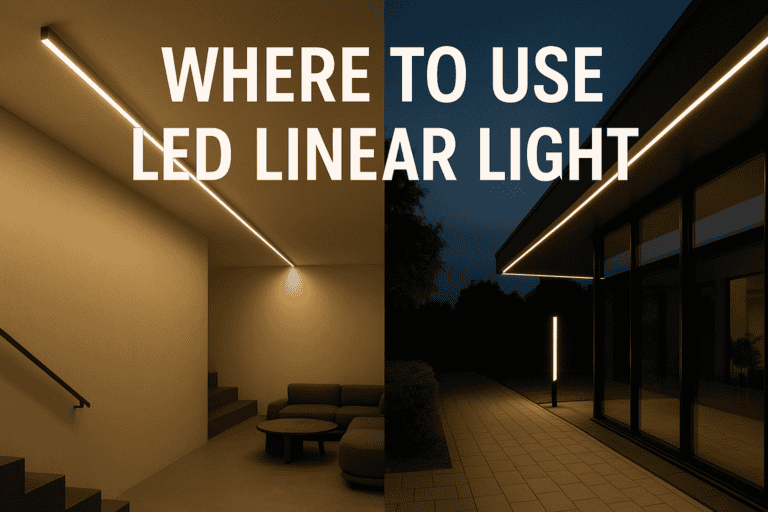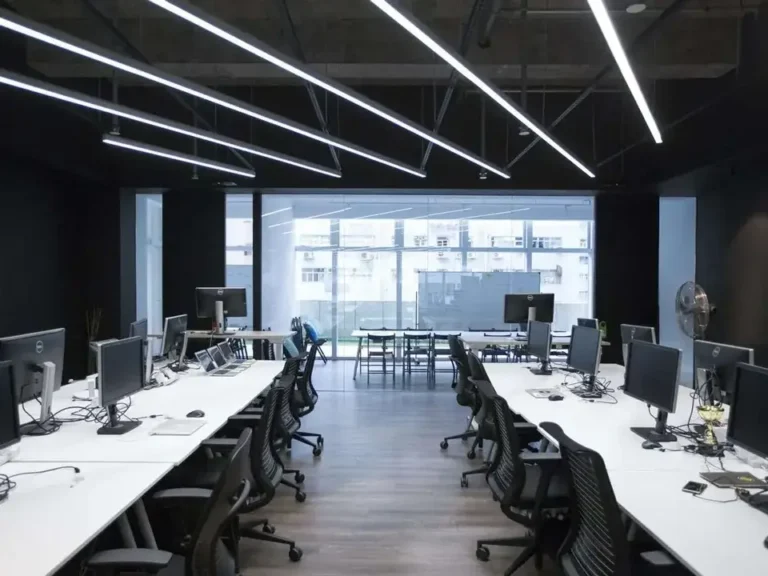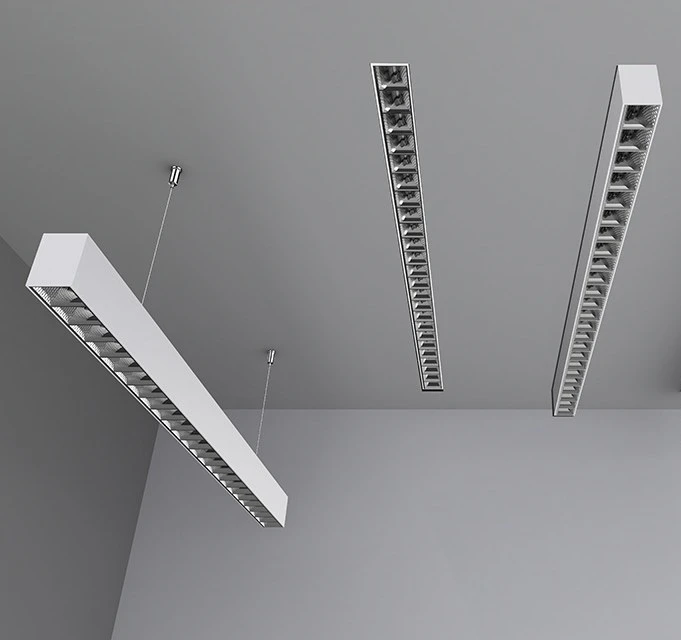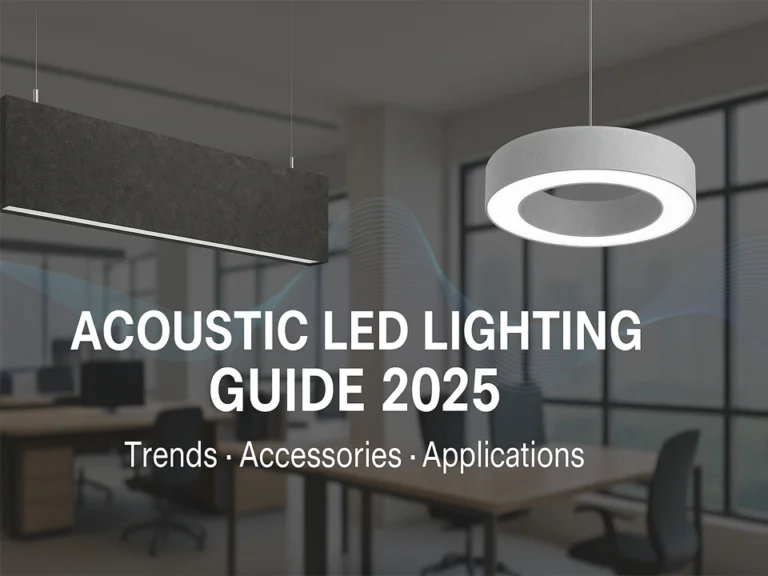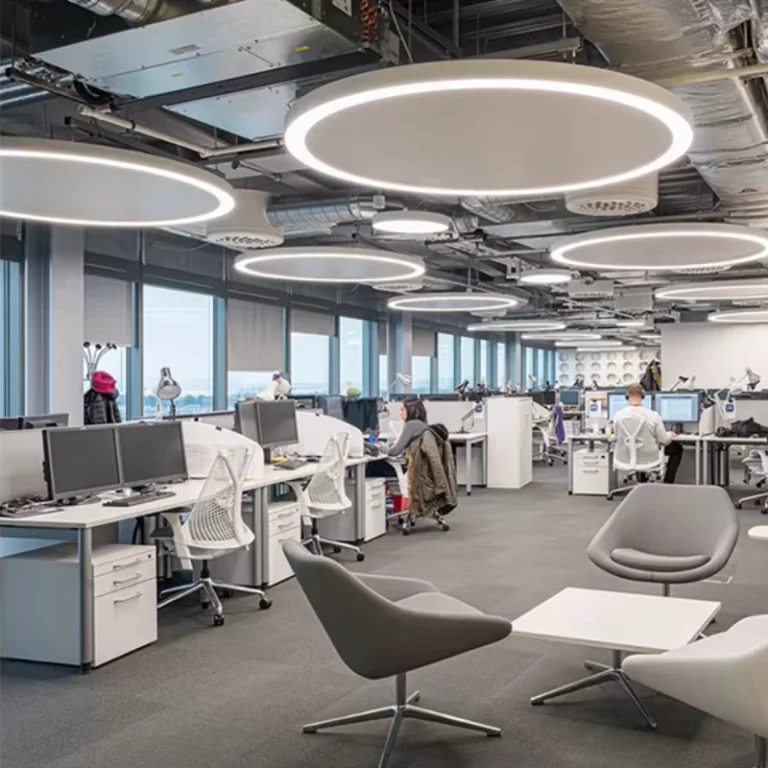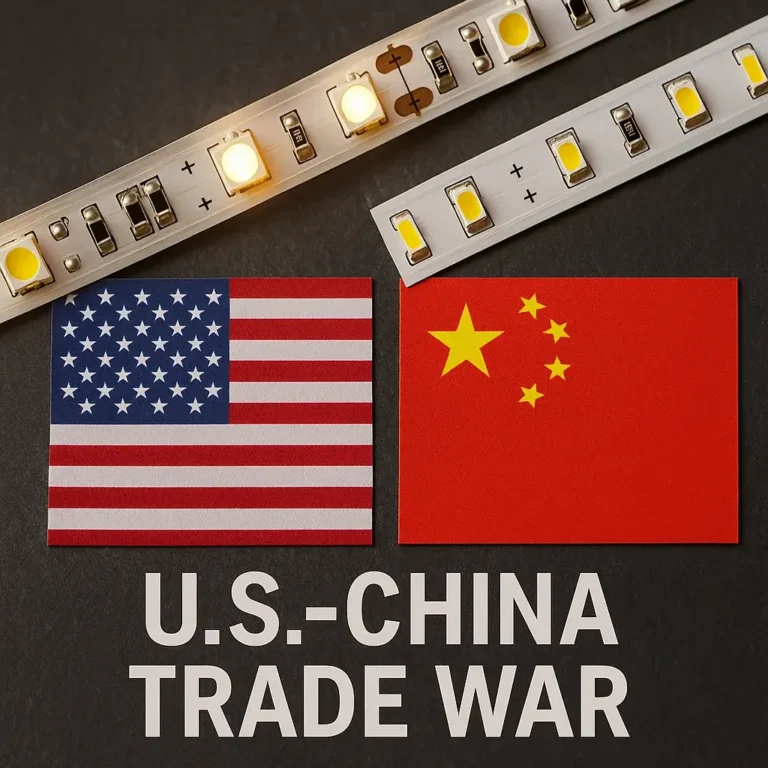Alors que l'architecture évolue vers le minimalisme et les lignes visuelles épurées, la conception de l'éclairage s'intensifie pour jouer un rôle plus créatif et fonctionnel. Parmi toutes les options, l'éclairage à LED linéaire est devenu un outil de conception clé, qui n'est plus limité aux lignes droites ou aux mises en page standard. Avec les progrès de l'efficacité des LED, du facteur de forme et de l'ingénierie des profils, les luminaires linéaires d'aujourd'hui peuvent se plier, se tordre et se connecter de manière transparente du sol au plafond, dans les virages et dans les espaces ouverts. Les concepteurs et les ingénieurs ont désormais la liberté de créer des lignes continues de lumière qui suivent le flux de l'architecture plutôt que de l'interrompre. Que ce soit dans les bureaux commerciaux, les commerces de détail haut de gamme ou les environnements d'accueil modernes, l'éclairage linéaire offre à la fois une harmonie visuelle et une flexibilité de conception, ce qui prépare le terrain pour ce guide sur les types, les applications et les principales considérations dans le choix de la bonne solution d'éclairage linéaire.
Qu'est-ce que l'éclairage linéaire LED et pourquoi's gagne en popularité
L'éclairage linéaire LED fait référence aux luminaires rigides qui utilisent la technologie LED pour produire des lignes de lumière uniformes et allongées. Généralement construits avec des boîtiers et des diffuseurs en aluminium, ces luminaires sont disponibles dans différentes longueurs, puissances et styles de montage, ce qui les rend très polyvalents pour une utilisation architecturale et commerciale. Contrairement aux éclairages ponctuels ou à panneaux traditionnels, les éclairages linéaires offrent un éclairage continu et sans couture avec une apparence élégante et minimale.
La popularité croissante de l'éclairage linéaire LED est motivée par sa capacité unique à mélanger la forme et la fonction. Les concepteurs et les ingénieurs privilégient ces éclairages pour leurs lignes visuelles épurées, leur efficacité énergétique élevée et leur distribution précise de la lumière. Des bureaux à aire ouverte aux plafonds de vente au détail et aux couloirs d'hôtel, les luminaires linéaires améliorent à la fois le confort visuel et la cohérence esthétique. De plus, de nombreux systèmes modernes prennent en charge la gradation, la liaison modulaire et l'intégration avec des commandes intelligentes, permettant à la fois de performances et de flexibilité. Alors que les entreprises recherchent des solutions d'éclairage professionnelles, évolutives et visuellement raffinées, l'éclairage linéaire LED continue de monter en tant que choix préféré dans la conception d'éclairage contemporain.
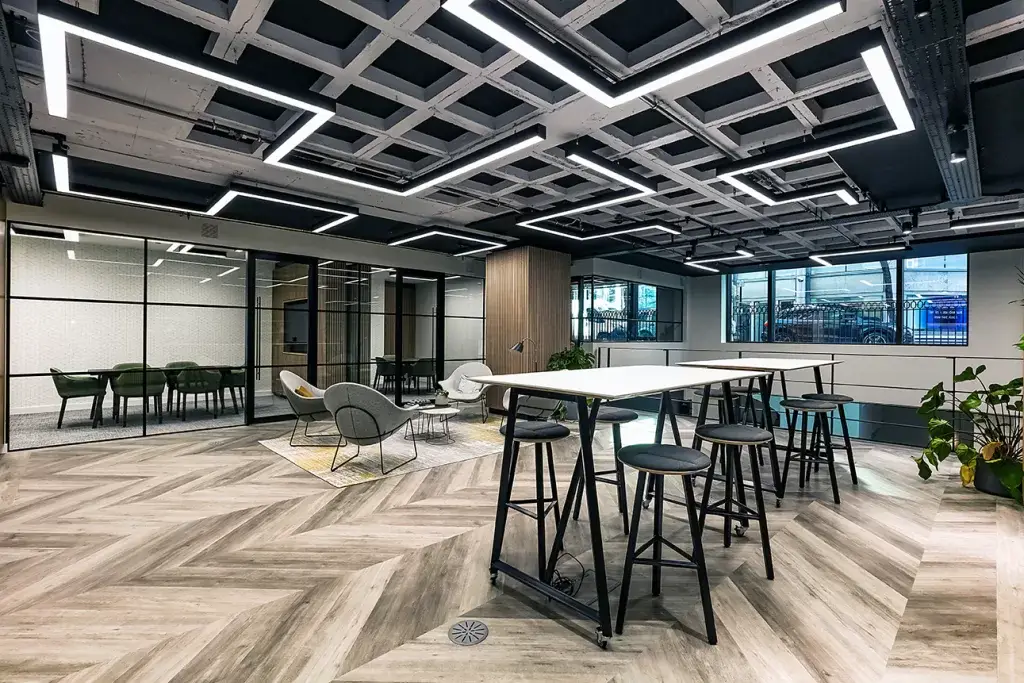
Principales classifications de l'éclairage linéaire LED
L'éclairage linéaire LED est disponible dans une grande variété de types, permettant aux concepteurs et aux ingénieurs d'adapter les plans d'éclairage aux exigences fonctionnelles et esthétiques. Voici cinq façons clés de classer les appareils linéaires à LED rigides.
Par méthode de montage
Les éclairages linéaires à LED rigides offrent de multiples options de montage pour répondre aux différents besoins architecturaux et aux effets visuels. Ces méthodes déterminent la façon dont le luminaire s'intègre à l'espace. Les styles de montage courants comprennent :
encastré
Installé au ras du plafond, des murs ou des sols pour un aspect propre et sans garniture. Idéal pour les bureaux, les galeries et les intérieurs modernes où le minimalisme est essentiel.
en surface
Monté directement sur des surfaces planes, telles que des plafonds, des murs ou des meubles, sans nécessiter de découpe. Ceci est couramment utilisé dans les rénovations ou les plafonds en béton.
Suspendu (pendentif)
Accroché au plafond avec des câbles ou des tiges, les luminaires suspendus fournissent un éclairage direct équilibré et sont populaires dans les espaces commerciaux, d'accueil et de coworking.
mural
Installé horizontalement ou verticalement sur des murs, souvent utilisé comme éclairage d'accentuation, éclairage de couloir ou pour mettre en évidence des éléments architecturaux.
monté sur les coins
Conçu pour s'adapter parfaitement à des intersections à 90°, telles que le plafond au mur ou le mur au sol, fournissant des lignes lumineuses continues sur les surfaces.
Piste / Monté magnétique
Systèmes modulaires où les fixations linéaires sont fixées magnétiquement ou mécaniquement à un rail, permettant un repositionnement flexible. Idéal pour la vente au détail ou l'éclairage d'affichage.
Du plafond au mur au sol
Une méthode d'installation continue où la lumière linéaire s'étend de manière transparente du plafond à la paroi et au sol. Cette technique met l'accent sur le flux architectural et est couramment utilisée dans les espaces commerciaux haut de gamme pour mettre en évidence la géométrie spatiale ou créer des voies visuelles.

Par sens de distribution de la lumière
La façon dont la lumière est émise par un luminaire linéaire détermine son effet sur l'espace et l'atmosphère :
Éclairage direct : Émet une lumière vers le bas pour un éclairage fonctionnel et axé sur les tâches, courant dans les espaces de travail et les salles de classe.
Éclairage indirect : Lance la lumière vers le haut pour réfléchir au plafond, créant un éclairage doux et ambiant.
Direct + indirect : Fixations bidirectionnelles offrant une lumière à la fois vers le bas et vers le haut, équilibreant confort visuel et efficacité.
Émettage latéral / Lavage mural : Projette la lumière horizontale pour mettre en évidence les surfaces verticales, utilisées dans les galeries, les halls ou les murs.
Distribution asymétrique : La lumière est inclinée sur un côté, utile pour l'éclairage d'affichage ou la mise en évidence des détails architecturaux.
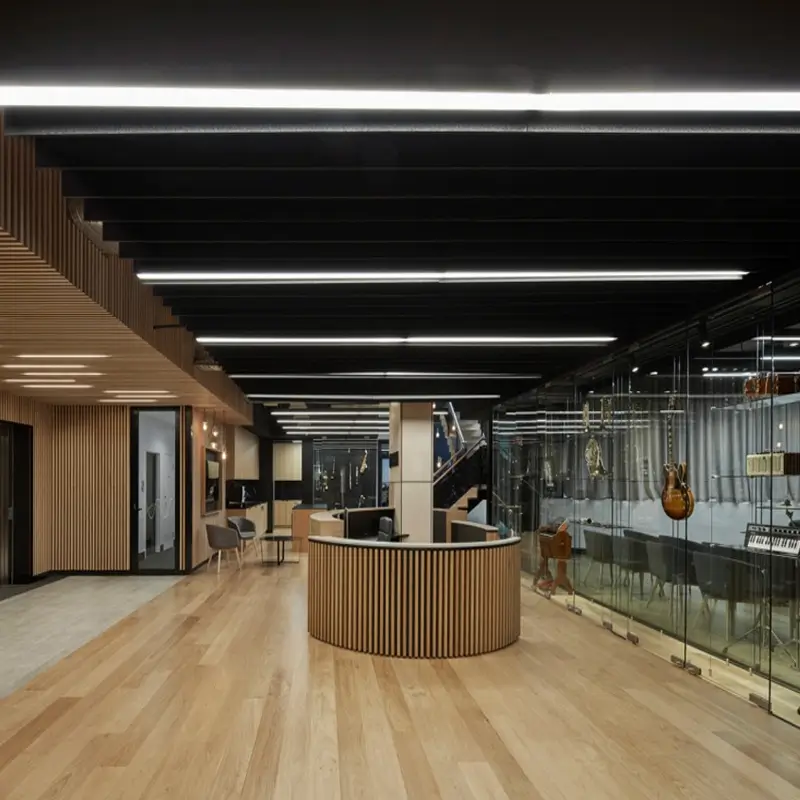
Éclairage linéaire à LED directe
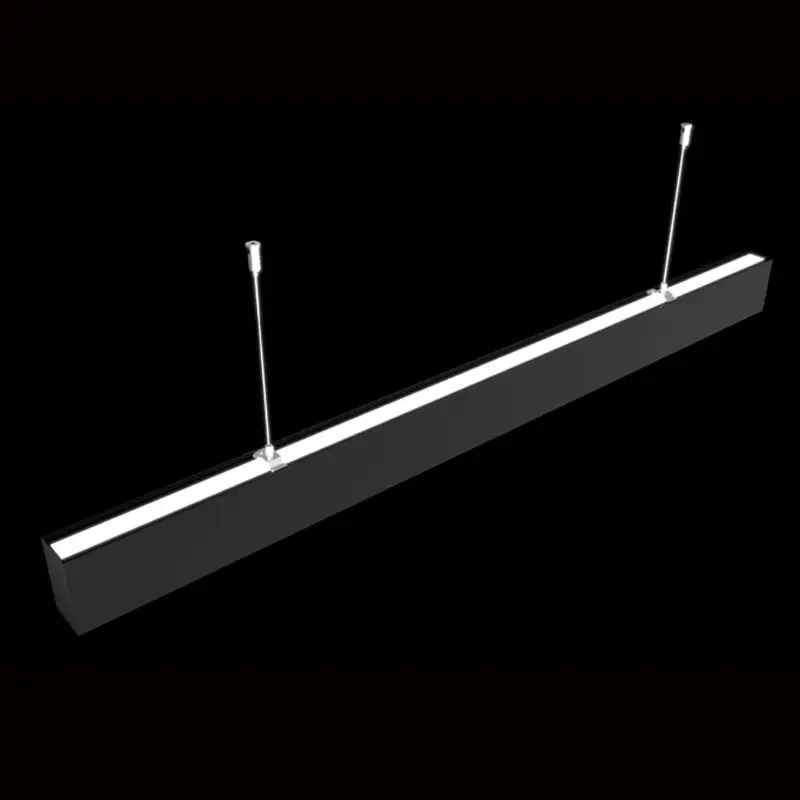
Éclairage linéaire LED indirect

Éclairage linéaire à LED double direct
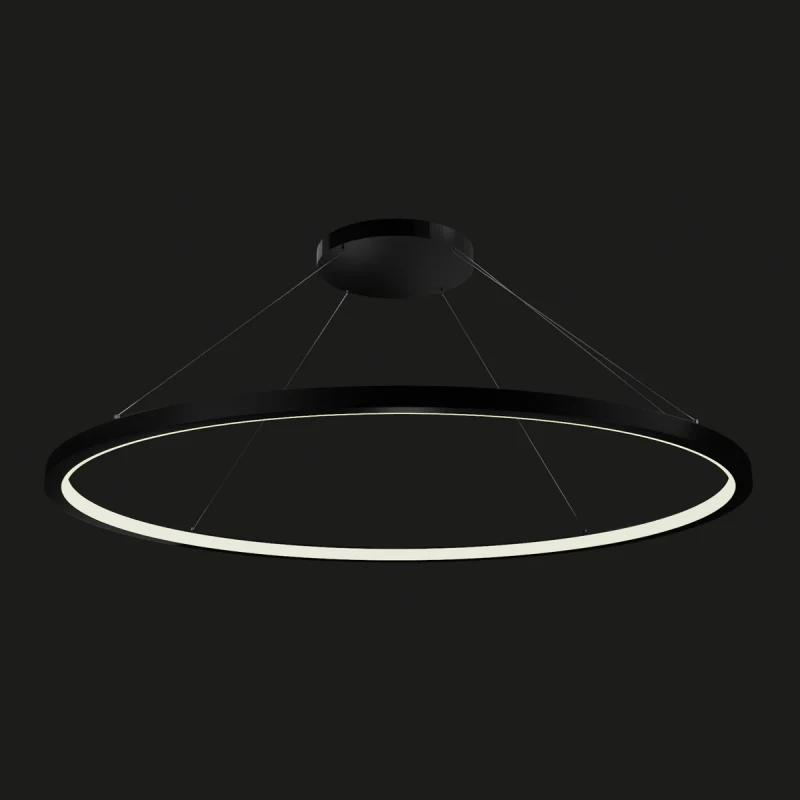
Éclairage linéaire LED à émission latérale
Par forme et structure de profil
Les éclairages linéaires ne sont plus limités aux barres droites, elles peuvent prendre de nombreuses formes géométriques et personnalisées :
Droite (standard linéaire) : Le format classique rigide, idéal pour les lignes continues et les lignes épurées.
Forme L / U-forme : Pour emballer les coins, les vitrines ou les bords de meubles.
Forme en zigzag / forme en S: Utilisé pour l'accent décoratif ou architectural, en particulier dans les lobbies ou les espaces créatifs.
Formes courbes et rondes : Les profils de pliage permettent des installations circulaires, à arc ou ovale, souvent observées dans les intérieurs et les intérieurs haut de gamme.
Triangle / Carré / Rectangle / Hexagone / Formes polygonales : Assemblés à partir de profils rigides découpés sur mesure, ces formes créent des caractéristiques de rythme visuel ou de plafond décoratif.
Conceptions sans cadre ou sans traits : Des profils minimalistes qui se fondent de manière transparente dans les cloisons sèches ou la menuiserie.
Profils ultra-minces / corps larges : Des tailles variables pour s'adapter aux espaces étroits ou aux besoins de sortie élevée.
Ces options de formes permettent aux concepteurs d'éclairage d'aligner la forme du luminaire avec l'intention architecturale, atteignant à la fois la performance et l'esthétique.
par fonctionnalité
Les éclairages linéaires modernes sont disponibles avec des fonctionnalités améliorées telles que la variation (0-10V, DALI), le blanc accordable, les effets RGB/RGBW, la sauvegarde d'urgence et les performances sans scintillement pour les environnements sensibles.
par scénario d'utilisation
L'éclairage linéaire peut être classé par utilisation ciblée : éclairage de travail de bureau, éclairage d'accentuation au détail, éclairage ambiant des hôtels, luminaires industriels à haute lumière et points forts architecturaux.
Scénarios d'application de l'éclairage linéaire LED
Éclairage de bureau
Dans les bureaux modernes, les éclairages linéaires directs/indirects encastrés, en général de 1 200 mm de long et 30 à 40 mm de large, sont installés en rangs continus pour fournir un éclairage de travail uniforme avec UGR<19. Ces luminaires utilisent souvent une température de couleur de 4 000 000 pour maintenir la mise au point et prennent en charge DALI ou gradation 0–10V. Dans les zones collaboratives, des pendentifs linéaires suspendus sont utilisés pour créer un zonage visuel tout en maintenant des lignes de plafond propres. Le facteur de forme linéaire aide à renforcer la disposition structurée des espaces de travail ouverts.
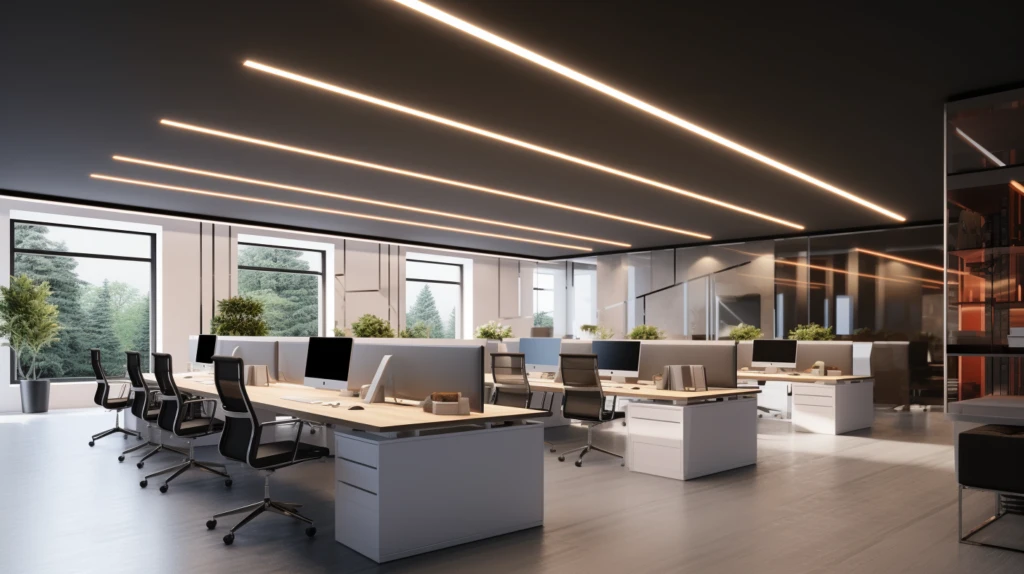
Magasins de détail et fenêtres d'affichage
Les environnements de vente au détail utilisent souvent des éclairages linéaires en zigzag montés en surface ou suspendus pour créer des modèles de plafond dynamiques au-dessus des allées de produits ou des îlots d'affichage. Ces luminaires, généralement de 20 à 30 mm de large, combinent des LED CRI (>90) élevées avec une lumière chaude de 3 000 K pour un éclairage de produit flatteur. De plus, des systèmes linéaires de style Matrix sont installés en tant que fond de mur ou murs légers, offrant une lueur latérale douce et créant une atmosphère de marque. Variation flexible via 0 à 10 V ou contrôle intelligent permet aux détaillants d'ajuster l'éclairage pour les promotions ou les écrans de fenêtre.
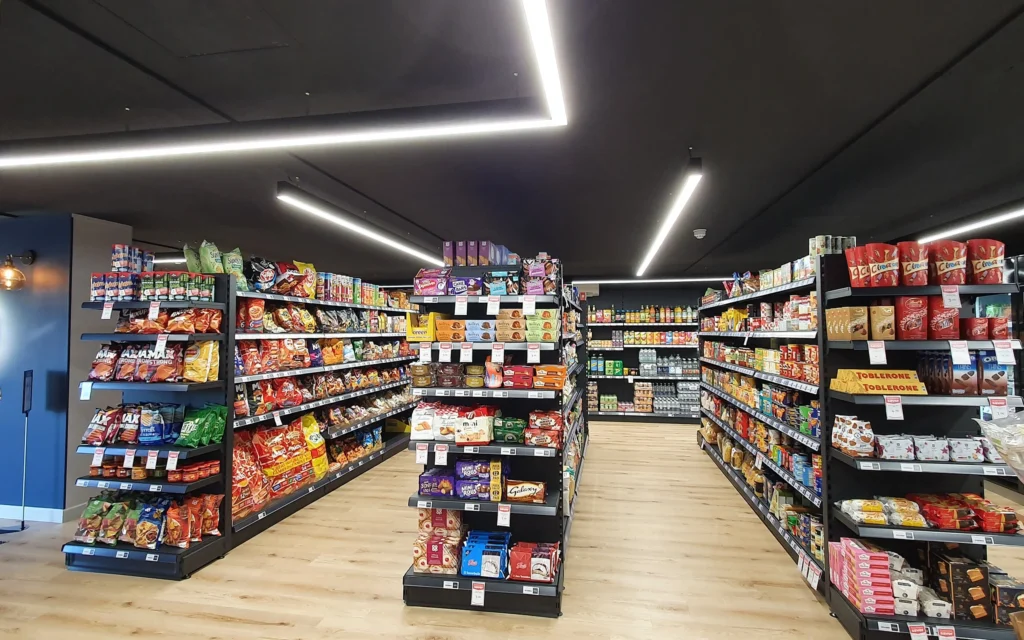
Hall d'entrée et espaces de réception
Pour obtenir une impression de flux spatial, un éclairage linéaire continu « plafond contre mur au sol » est utilisé pour définir les formes architecturales. Ces profils rigides, souvent de 25 mm ou 40 mm de large, utilisent des diffuseurs dépolis pour créer un ruban visuel lisse de lumière autour des comptoirs de réception ou des sièges. Des lampes linéaires suspendues ou en forme d'anneau supplémentaires sont utilisées au-dessus des salons pour définir des zones visuelles. La plupart des installations utilisent un blanc chaud 3000K avec contrôle DALI pour une gradation temporelle, améliorant l'atmosphère du jour au soir.
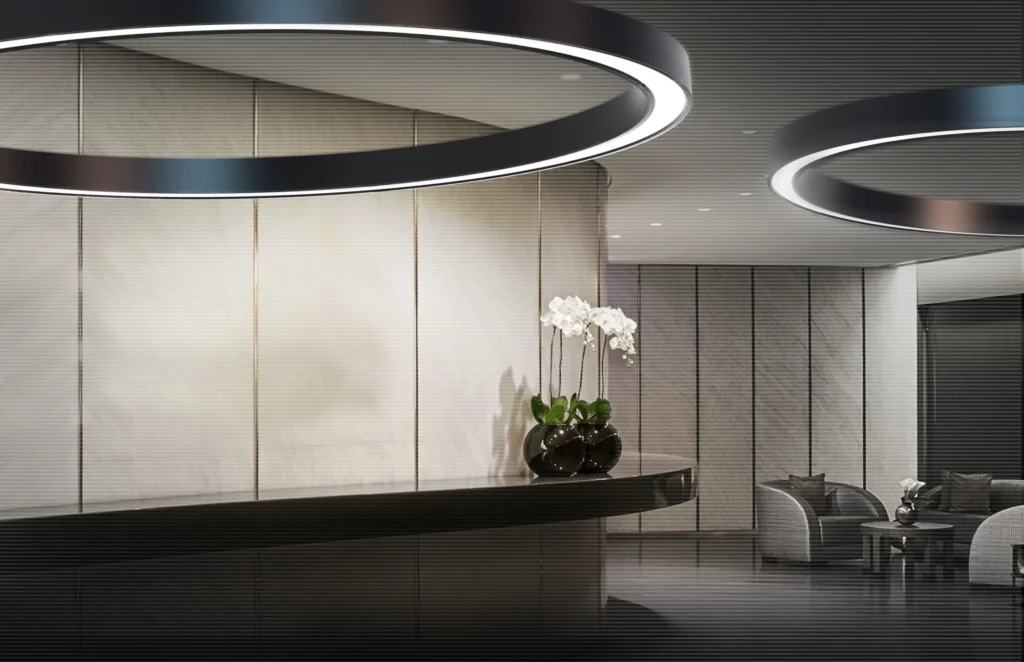
Santé et résidences pour personnes âgées
Les éclairages linéaires indirects montés sur le mur avec optique asymétrique sont utilisés dans les couloirs des patients pour réduire l'éblouissement tout en conservant une luminosité adéquate. Ces luminaires sont généralement montés sur 50 mm de large, encastrés ou semi-surfaces, et offrent une fonctionnalité de blanc accordable (2700K–5000K) pour prendre en charge les rythmes circadiens. Le long des bords du sol, des lumières linéaires à plis ultra-minces (12 à 15 mm) sont intégrées pour servir de guidage nocturne de bas niveau, souvent avec des moteurs de détection de mouvement PIR et des conducteurs à courant constant sans scintillement pour répondre aux normes de sécurité des soins de santé.
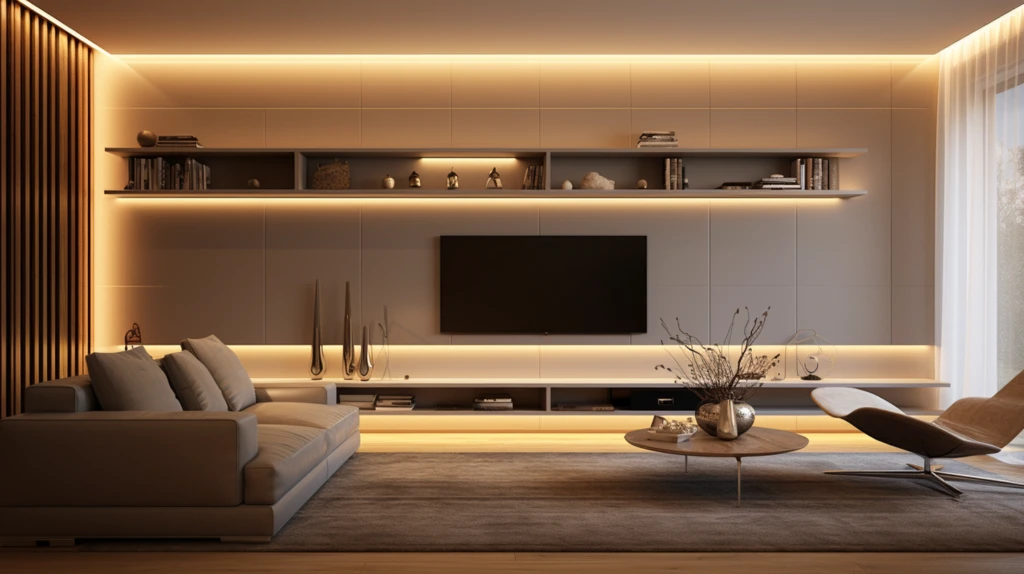
Bibliothèques pédagogiques et zones d'
Dans les environnements d'apprentissage, des éclairages linéaires directs/indirects suspendus sont installés au-dessus de longues tables d'étude, utilisant généralement des luminaires de 1 200 à 1 500 mm avec une lumière neutre de 3 500 000 000 000 000 00 Pour réduire la réflexion acoustique, certains profils sont intégrés à des panneaux insonorisants. Dans les grilles de plafond, les éclairages linéaires de style de cadre carré ou rectangulaire sont encastrés pour créer des motifs d'éclairage géométriques. Ces systèmes prennent souvent en charge le contrôle PoE (Power over Ethernet), permettant des ajustements de luminosité et de planification centrales via le réseau informatique de l'école.
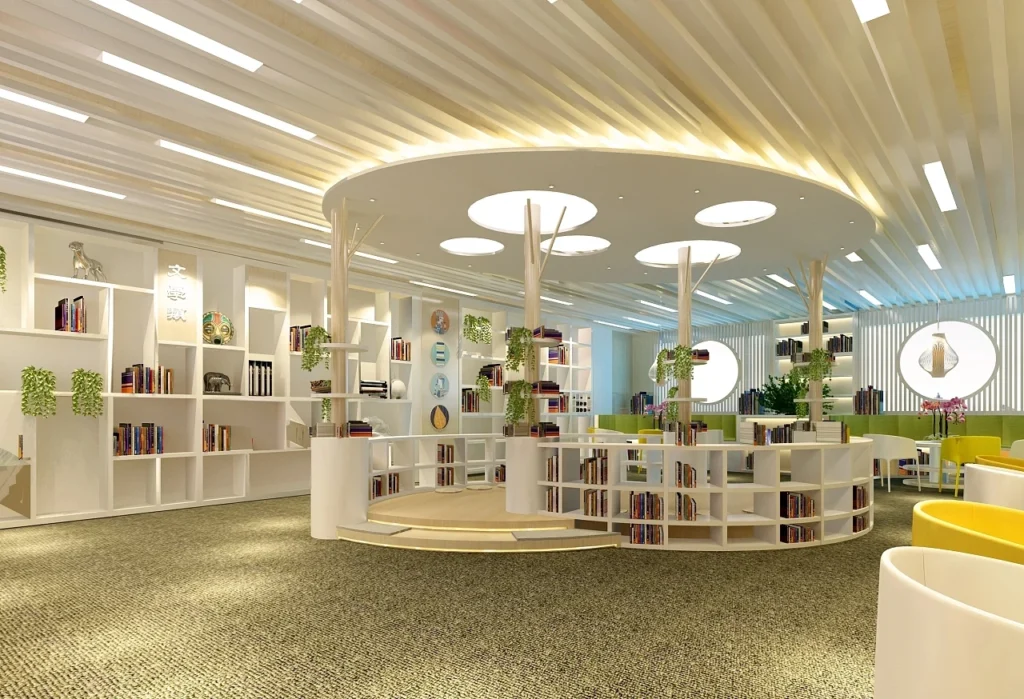
Salles d'exposition modernes
Dans les salles d'exposition haut de gamme telles que les concessionnaires automobiles, les galeries de meubles ou les centres d'expérience technologique, l'éclairage linéaire joue un rôle clé dans l'amélioration du rythme spatial et de la présentation des produits. Les éclairages linéaires à cadre carré encastré ou suspendu, souvent en taille modulaire de 600x600mm ou 1200x1200mm, sont utilisés pour créer une sensation de structure au-dessus des zones d'affichage. Pour la superposition visuelle, des bandes linéaires verticales intégrées au mur avec des arrière-plans de produit de température de couleur de 2700 000 à 3 000 000 000 000 000 K. Les systèmes comportent souvent une gradation de 0 à 10 V et sont associés à des capteurs de mouvement ou à des panneaux de contrôle de scène pour adapter l'éclairage au flux et à l'heure de la journée, créant ainsi un environnement immersif.

Avantages de l'utilisation d'un éclairage linéaire à LED
Esthétiquement polyvalent – formes, motifs et liberté de conception
Contrairement aux luminaires traditionnels, les éclairages linéaires à LED sont disponibles dans une grande variété de formes, de profils et de formats modulaires. Les concepteurs peuvent utiliser des lignes droites, des formes en zigzag, des formes en L ou des cadres polygonaux pour créer des dispositions de plafond ou des compositions géométriques uniques. Qu'il s'agisse de former des carrés incandescents au-dessus d'un showroom ou d'intégrer des lignes angulaires à travers des espaces ouverts, l'éclairage linéaire ajoute une direction visuelle forte et améliore le langage architectural global. Il élève la hiérarchie spatiale et donne instantanément aux environnements une esthétique moderne et avant-gardiste.
Installation flexible – Intégration transparente du plafond au mur au sol
L'un des points forts les plus distinctifs de l'éclairage linéaire LED est son adaptabilité dans l'installation. Les luminaires peuvent être encastrés, montés en surface ou suspendus, et plus important encore, ils peuvent passer en douceur du plafond au mur au sol en tant qu'élément d'éclairage continu. Cette flexibilité permet aux concepteurs de « dessiner avec la lumière » sur plusieurs plans, créant ainsi une sensation de flux et de cohésion dans les intérieurs commerciaux. Qu'il s'agisse de contourner un mur caractéristique ou de former un chemin de lumière continu autour d'un hall, les luminaires linéaires s'intègrent sans effort dans le cadre architectural.
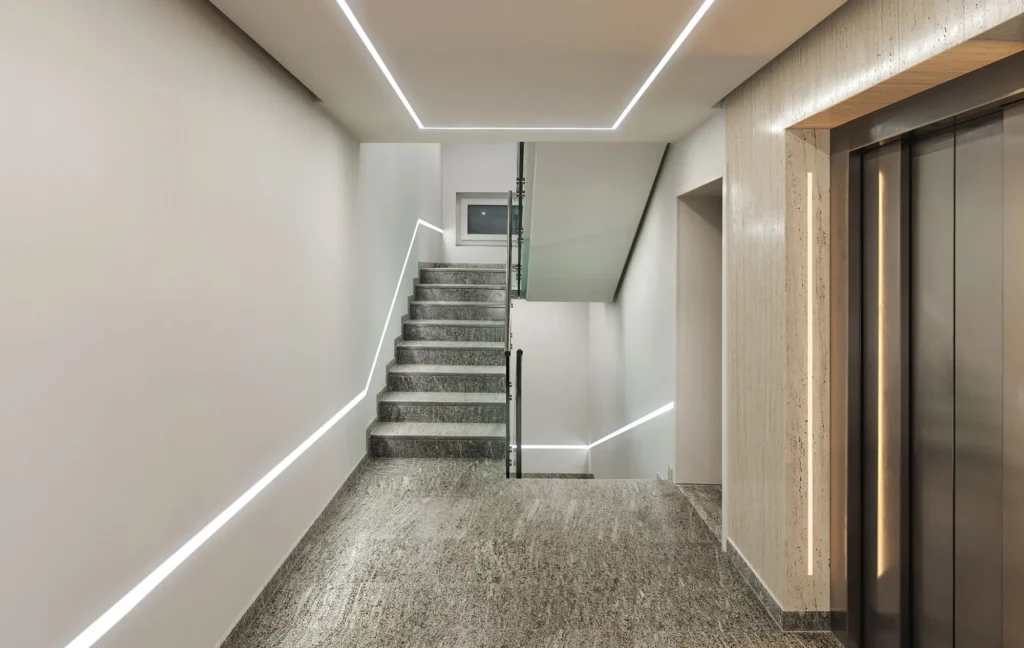
Entièrement personnalisable – Tailles, longueurs et options de profil
Les systèmes d'éclairage linéaire à LED sont hautement personnalisables pour répondre aux différentes exigences du projet. Les profilés sont disponibles dans une gamme de largeurs et de profondeurs, des types ultra-minces de 12 mm aux versions à haut rendement. Les longueurs standard telles que 600 mm, 1200 mm ou 1500 mm peuvent être combinées ou coupées librement pour s'adapter à des espaces exacts. Au-delà de la taille, les clients peuvent spécifier des angles de faisceau, des types de diffuseurs, des températures de couleur (2 700 000 000 000 000 000 000 000 de 2 700 000 000 000 000 000 de 10 V, DMX, DM Ce niveau de flexibilité rend l'éclairage linéaire idéal pour les aménagements standards et les conceptions haut de gamme sur mesure.
Avantages supplémentaires – Efficacité, longévité et qualité de la lumière
En plus de la forme et de la flexibilité, les éclairages linéaires à LED offrent d'excellentes performances. Ils offrent une efficacité lumineuse élevée (souvent plus de 120 lm/W), une distribution uniforme de la lumière, un faible éblouissement et une longue durée de vie, généralement plus de 50 000 heures. Avec des options CRI élevées et des pilotes sans scintillement, ils sont adaptés à l'éclairage de tâches, à l'affichage et à l'éclairage centré sur l'homme.
Comment choisir le bon éclairage linéaire pour votre projet
Lors de la sélection de l'éclairage linéaire, votre approche dépend de la clarté des exigences de votre projet. Voici deux scénarios courants :
Pour des projets d'ingénierie avec dessins
Si vous avez déjà des dessins d'éclairage ou d'architecture, le choix des lumières linéaires devient un processus de correspondance précis. En fonction de la disposition, vous devrez confirmer les dimensions exactes du profil (par exemple, 20 mm x 35 mm ou 50 mm de large), des formes de luminaires (droites, en L, en zigzag, anneaux, etc.) et des méthodes d'installation (encastrées, suspendues, murales ou du plafond au mur).
Au-delà de la structure, vérifiez la puissance par mètre, la température de couleur (par exemple, 3 000 000 000 000 000 000 000 000 000 000 000 K de couleur (par exemple, 3 000 000 000 000 000 000 K ou 4 000 000 000 K), le protocole de variation (0 à 10 V, DALI, Triac) et le traitement de surface (blanc, noir, argent Une correspondance détaillée des spécifications garantit la cohérence de la conception et les performances fonctionnelles.
Pour les projets sans dessins ni exigences claires
Si vous êtes encore au stade du concept, il est préférable de commencer par sélectionner le style d'éclairage linéaire qui correspond à votre vision de conception. Avez-vous besoin d'un profil mince, d'une forme architecturale audacieuse ou d'une forme personnalisée ?
Ensuite, choisissez la méthode d'installation en fonction des conditions de plafond et de mur. À partir de là, finalisez les détails pratiques tels que la longueur, la luminosité, la température de couleur et le type de contrôle. Notre équipe recommande souvent des systèmes modulaires ou personnalisables pour des besoins aussi flexibles.
Au Signlite, nous soutenons à la fois des projets clairement spécifiés et le développement de concepts à un stade précoce. Que vous ayez un ensemble complet de dessins ou une idée de conception, nous vous aiderons à choisir le profil, la conception optique et la solution de contrôle qui conviennent à votre espace.
Contactez notre équipe dès aujourd'hui pour obtenir des recommandations sur mesure ou un devis de projet rapide.
